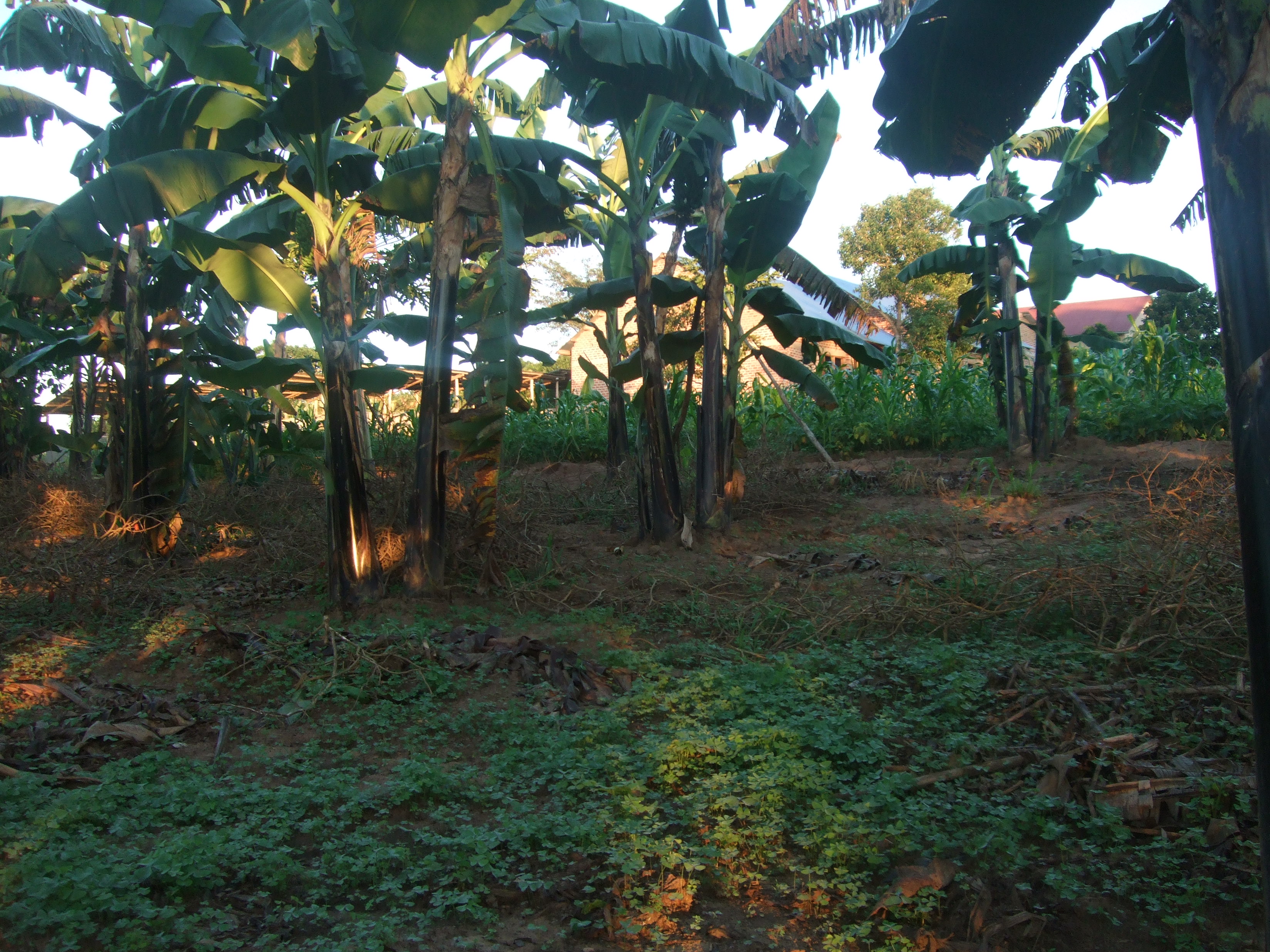



Planting For Hope: Where Sustainable Agriculture Saves Communities
When clean water is scarce and fertiliser and herbicides too expensive, sustainable agriculture is not a fashionable option but a necessity.One of the driving forces behind sustainable agriculture in central Africa is agriculture lecturer and farmer, Apollo Saku who farms in the Kyanamukaaka region in the Masaka District of south west Uganda.
Apollo has successfully turned barren land into orchards and smallholdings into large-scale pork and poultry units on the back of organic, low input systems.
Through the support framework of the Planting for Hope programme, Apollo has demonstrated to villagers that sustainable methods can assist them in fighting poverty. This has been through his practical work and teaching at the Kamuzinda farm school.
A Matooke plantation at Kyanamukaaka
Photo Courtesy of Kate Oakley
He emphasises the importance of chilli and wood ash blend in fighting weeds and pests.
“Farmers wishing to produce at low cost can combine wood ash and chilli to make a multipurpose compound that can kill weeds and repel insects from tilled land,” explains Apollo. “You can spray weeds with instant results.”
However, the method is time consuming as the spray needs to be mixed and left for two weeks to form a concentrate.
Only succulent weeds are killed in this way but Apollo recommends the technique for low income farmers.
“Larger scale farmers often use broad spectrum herbicides such as 2,4D. These substances achieve high level kill-off but are too expensive for many of the Masaka communities.”
Kate Oakley, Director of Planting for Hope says that Apollo has achieved remarkable results through low-input farming.
Two acres of unproductive land was turned into a valuable growing plot by harnessing local plants and using them in conjunction with farm animals.
Kate explains: “In his latest project, the first thing Apollo did was plant Matooke, a green banana eaten after a long steaming process. This is the staple diet of the village.
“Next he planted Macuna because of its fast growth qualities and its high protein content. This was put in as a good forage crop for cattle and pigs.
“Apollo made sure that leaves from the Macuna were able to rot and produce a brilliant fertiliser for the land.”
The Macuna and Matooke plantation demonstrates a fundamental principle of Apollo’s approach – integrated farm management.
After being fed on a forage diet - which included Macuna - the pigs and cattle on the enterprise were then mucked out and the slurry left to mulch into a low cost fertiliser.
Ankole cattle, locally named ‘manure cows’, are a native breed in Uganda, left to graze freely. The cows are a source of pride to farmers due to their exceptional dung that is collected for spreading.
Kate says that the Ankole’s nutritious manure was fundamental in turning a piece of land, termed ‘unproductive’ by locals, into a thriving Matooke plantation.
“Apollo had one of the best Matooke plantations when he was principal of the farm school in the area. This was achieved on an area of land hugely improved by slurry from the pigs and Ankole.”
Pigs are reared to pork weight in Uganda and hold a vital role in fertilising Matooke and Macuna plantations.
Photo Courtesy of Kate Oakley
Managing Water
Part of Apollo’s approach is that all elements of the farm link together in a mutually beneficial system. Costs are kept down, maximising any profit margin from selling produce.
Ugandan communities have learned through Apollo’s work that proper slurry management and simple field drainage operations impact on water quality.
Understanding this is essential as water is the most pressing issue facing Ugandan farming communities.
“Where I work we are desperate for water,” says Apollo. “The whole village of Kititi has no bore hole or clean water source.
“Getting water is tiresome and is done by women and children carrying 20 litre Jerry cans over half a mile. The only water we have is surface water - this is our biggest issue.”
Kate Oakley explains that such adversity has been overcome by draining wet areas of the farm and re-wetting parched land.
Doing so increased farm output as two low yielding areas were managed alongside each other in a programme that improved soil fertility and structure.
Further improvements were then made through the planting of Calliandra hedges around field margins, adds Mrs Oakley.
“Soil erosion was reduced by planting Calliandra hedges which reduced wind speeds over the land and preserved soil structure by reducing water erosion."
This was possible thanks to grant money provided by the International Tree Foundation.
Planting for Hope Foundation
From modest beginnings the work of Apollo and supporting charities has achieved great things. School teachers have been paid and self-sufficient communities have been constructed around farming.
Pea crops, carrots, onions and ground nuts have been grown which has sustained local communities – both economically and nutritionally.
Kate says that education plays an important role in reaching the targets of the Planting for Hope Foundation.
The ambition of the foundation is to provide land for the local community on which they can be fed and educated about sustainable and organic food production.
Ideally, some villagers will be empowered as small holders to carry on producing their own food through the techniques instilled into them by Apollo.
Michael Priestley
News Team - Editor
Mainly production and market stories on ruminants sector. Works closely with sustainability consultants at FAI Farms





